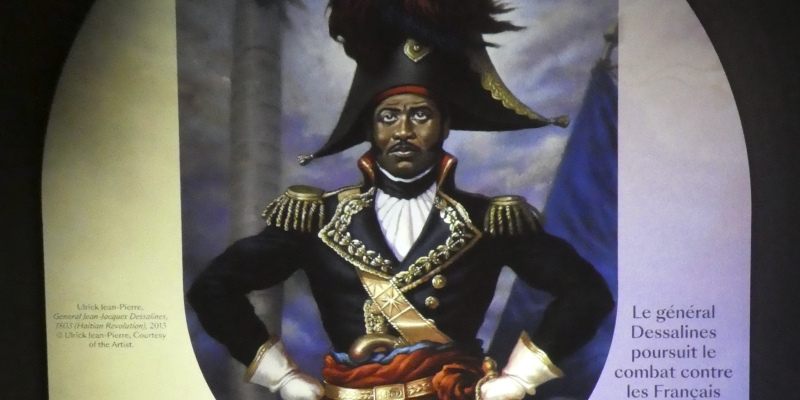
Thursday, December 28th, 2023
Dare Freedom - France's Path to the Abolition of Slavery
Cover image: Slide portraying General Jean-Jacques Dessalines of Saint-Domingue (detail)
© Entrée to Black Paris
The Pantheon is hosting a remarkable exhibition about the people who shaped France's convoluted road to the abolition of slavery.
It is inviting the public to visit the crypt to see Oser la liberté (Dare Freedom) to learn about the country's history of slavery and abolition and to see the final resting places and inscriptions commemorating many of the men and women who devoted their energy to combating slavery and racial prejudice during their lifetimes.
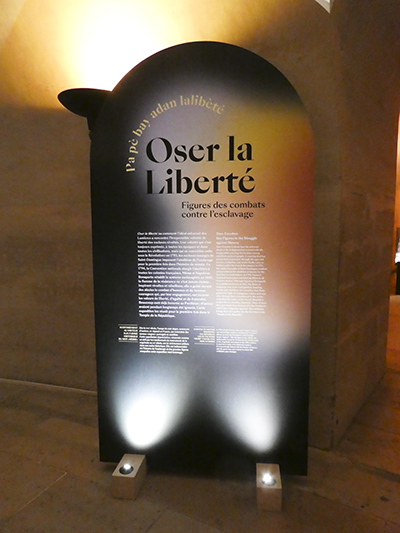 Oser la liberté information panel
Oser la liberté information panel
© Entrée to Black Paris
The exhibition was curated by cultural engineer and archivist Florence Alexis in collaboration with Haïtian writer and University of Paris docent Jean Marie Théodat. I was privileged to attend a superb guided visit to the exhibition delivered by both experts on December 9, 2023.
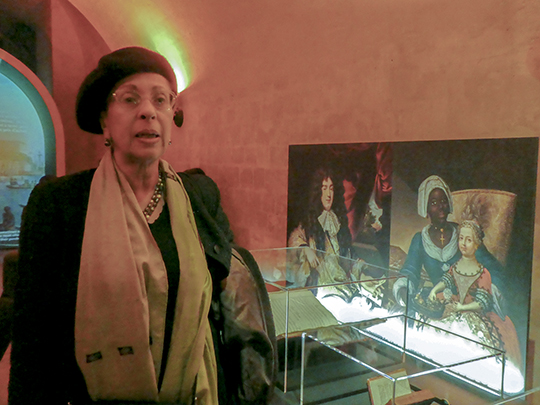
Florence Alexis
© Entrée to Black Paris
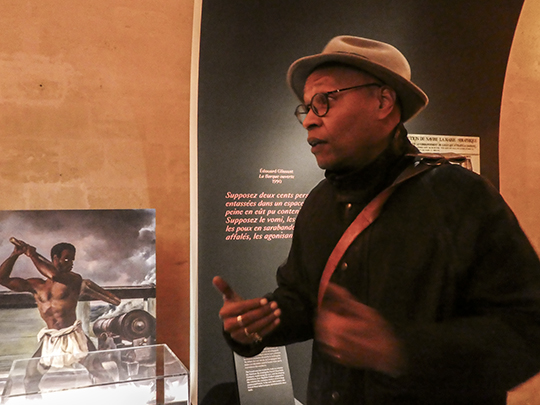
Jean Marie Théodat
© Entrée to Black Paris
If you plan to visit (which I strongly recommend), there are a few things you should know before you arrive.
Exhibition layout
Oser la liberté is found in the crypt of the Pantheon. To access it, you will need to descend a spiral stairway at the left rear of the main floor, walk up the center aisle once you are below ground, mount a few steps in a round space about halfway down the aisle, and turn left.
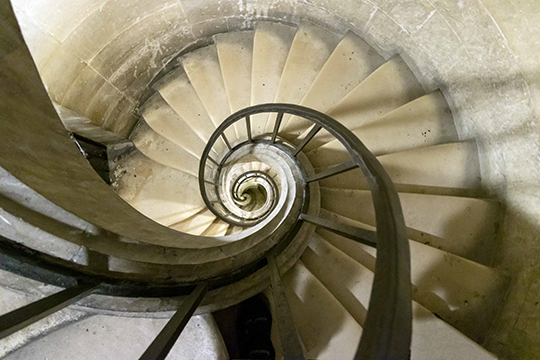 Spiral stairway leading to crypt
Spiral stairway leading to crypt
© Entrée to Black Paris
The exhibition is divided into four time periods: I - before 1789, II - between 1739 and 1802, III - between 1802 and 1848, and IV - after 1848.
Before entering the rectangular space beneath the south transept of the building, which houses the majority of the exhibition, you will find yourself in a spacious, semicircular area.
On your right, you will see two large displays from Section I of the exhibition.
On your left, you will see Section IV in its entirety.
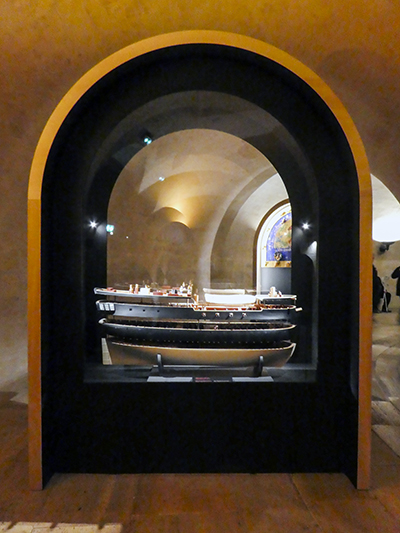 Section I - Model of slave ship l'Aurore
Section I - Model of slave ship l'Aurore
© Entrée to Black Paris
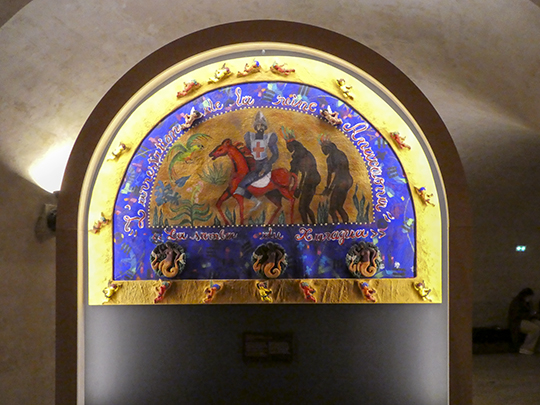
Section I - Arrest of Taïno queen Anacaona
© Entrée to Black Paris
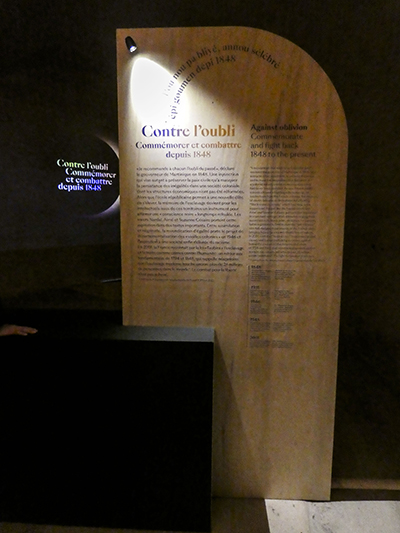 Section IV - Information panel
Section IV - Information panel
© Entrée to Black Paris
When you enter the passage between these two areas, you should proceed straight down the middle aisle to see Section I, then move to the left aisle for Section II, and finally go to the right aisle to see Section III.
Original publications and documents, reproductions of paintings, and rare collectibles are on display in these aisles.
All sections of the exhibition boast a silent slide show that presents the history of the time period and the personas who shaped that history.
Additionally, Section IV includes a table where a brief text and a video presentation evoke slavery as it exists today.
Exhibition atmosphere
There is no heating in the crypt, so be prepared for the temperature to be chilly to cold.
Though the colors selected for the exhibition are rich and vibrant, the light is quite dim.
The Pantheon is a mausoleum above all, so an appropriate demeanor is expected at all times.
Language
All information is presented in French and English, including time lines and a few recordings of excerpts from speeches or writings that are broadcast in individual aisles from time to time.
All principal information panels and several slides in each slide show present a sentence in Creole.
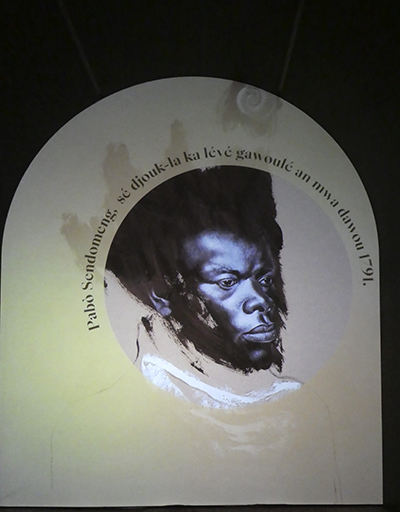 Section II - Slide depicting Dutty Boukman with Creole-language caption
Section II - Slide depicting Dutty Boukman with Creole-language caption
© Entrée to Black Paris
Content
Section I of the exhibition is entitled "La traite atlantique, une première mondialisation" ("The Slave Trade - A first globalisation").
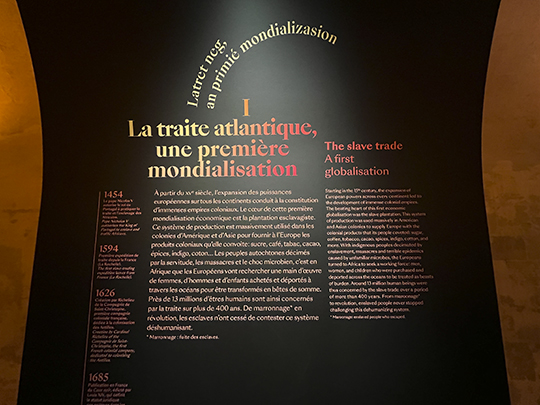
Section I - information panel
© Entrée to Black Paris
Among the items on display on this aisle are the original, handwritten manuscript of the Code Noir (Black Code) that regulated the treatment of enslaved people in France's colonies and a reproduction of a painting that demonstrated how Blacks were frequently presented as symbols of wealth while being represented on the same level as animals.
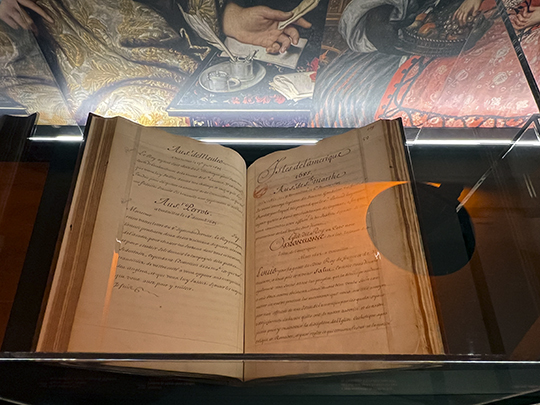 Handwritten manuscript of the Code Noir
Handwritten manuscript of the Code Noir
© Entrée to Black Paris
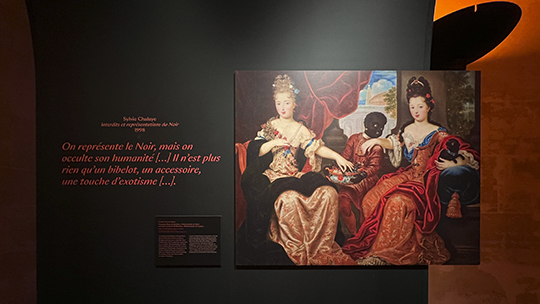
One represents the Black, but one obscures his humanity...
Sylvie Chalaye
© Entrée to Black Paris
The exhibition emphasizes that from the beginning of the imposition of slavery by European colonizers, Black people escaped their bondage and formed alliances with or integrated with Native Americans to create marron (runaway) communities.
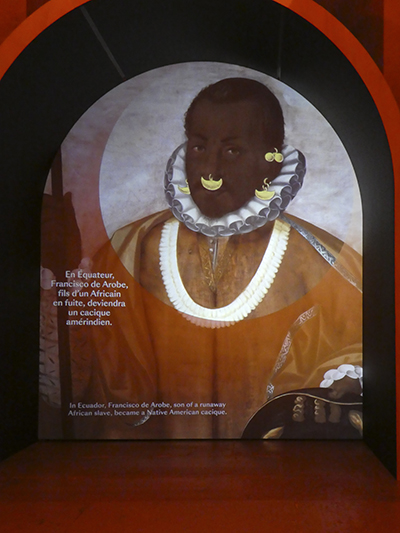 Slide depicting Francisco de Arobe - son of an African fugitive
Slide depicting Francisco de Arobe - son of an African fugitive
who became king of the Esmerelda coast of Equador
in the 16th century
© Entrée to Black Paris
Section II, "De marronnages en abolitions" ("From marronage to abolition"), presents topics including the writings of French Enlightenment writers Voltaire and Diderot, both of whom decried slavery, the struggle that free people of color in the colonies underwent to obtain equal rights while enslaving people themselves (including Toussaint Louverture), and the contributions that Black people such as Jean-Baptiste Bellay and Jeanne Odo made to the first abolition of slavery in 1794.
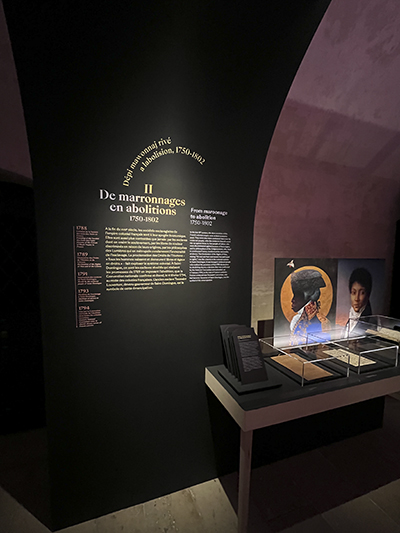 Section II - information panel, portraits, and documents
Section II - information panel, portraits, and documents
© Entrée to Black Paris
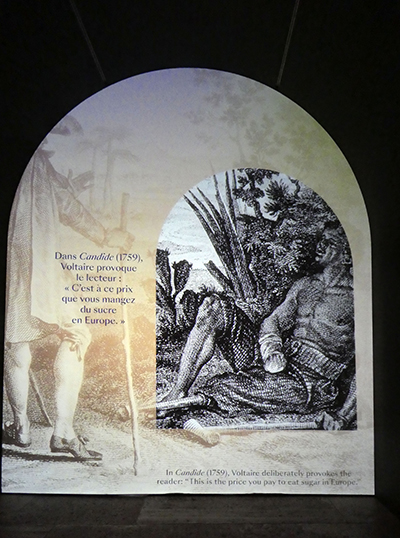 Voltaire - "This is the price you pay to eat sugar in Europe."
Voltaire - "This is the price you pay to eat sugar in Europe."
© Entrée to Black Paris
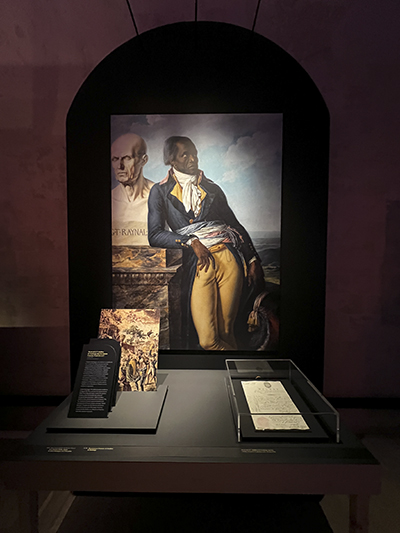
Portrait of Jean-Baptiste Bellay and original 1st abolition decree
© Entrée to Black Paris
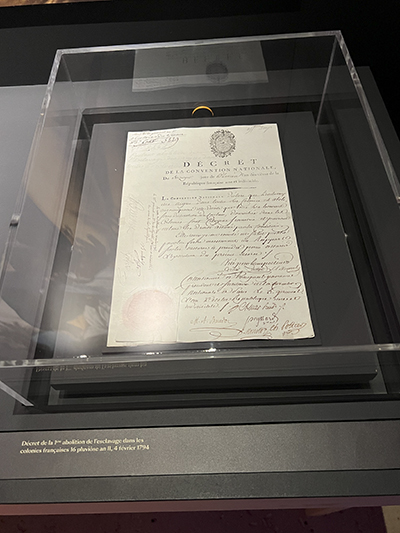
First 1st abolition decree - 4 February 1794
© Entrée to Black Paris
In Section III, "D'une abolition à l'autre" ("From one abolition to the next"), the exhibition explores events occurring between the reinstatement of slavery in France's colonies in 1802 and the final abolition in 1848. Slavery is reinstated in Guadeloupe despite the efforts of Louis Delgrès and his troops, Toussaint Louverture is arrested and deported to France in 1802 and dies there in 1803, General Jean-Jacques Dessalines engages the French army in combat and defeats the French in 1803...
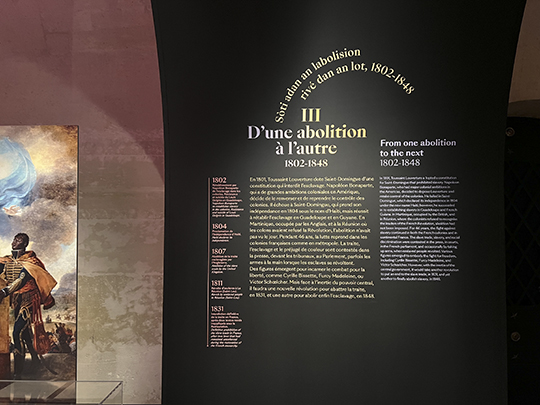 Section III - information panel
Section III - information panel
© Entrée to Black Paris
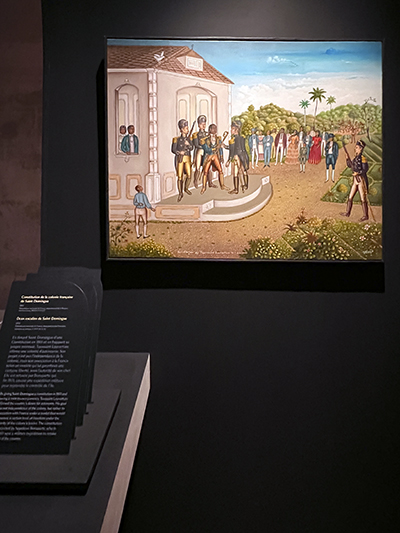 Arrest of Toussaint Louverture - painting by Serge-Moléan Blaise
Arrest of Toussaint Louverture - painting by Serge-Moléan Blaise
© Entrée to Black Paris
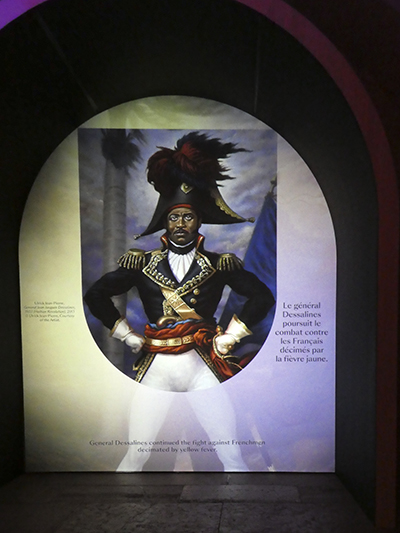 Slide depicting General Jean-Jacques Dessalines
Slide depicting General Jean-Jacques Dessalines
© Entrée to Black Paris
A full explanation of France's imposition of the ransom that cost Haïti its financial independence is presented in this section.
Section IV is called "Contre l'oubli, commémorer et combattre" ("Against oblivion, commemorate and fight back").
This consists primarily of a slide show of B&W photo portraits of twenty-four people who have persevered in the absence of or continued the fight for racial equality since the second abolition of slavery in 1848.
I was pleased to see a number of women (in addition to Josephine Baker and Christiane Taubira) among them.
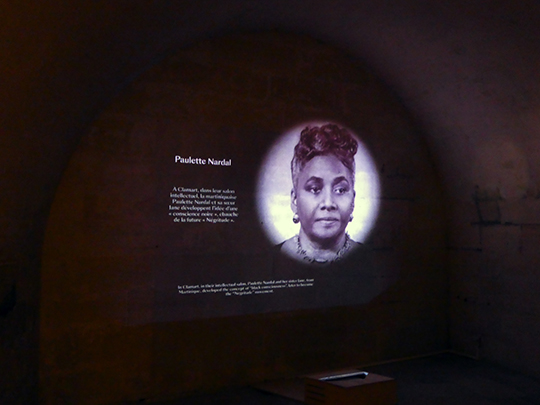 Slide depicting Paulette Nardal
Slide depicting Paulette Nardal
© Entrée to Black Paris
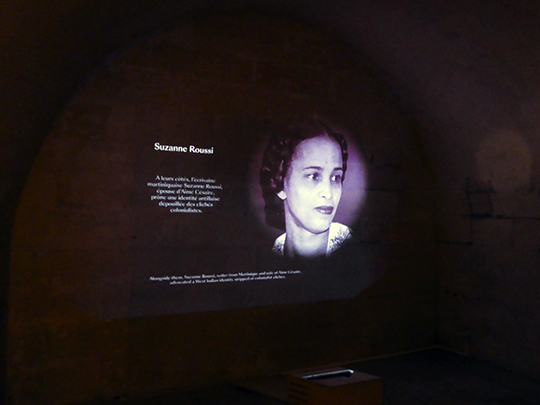
Slide depicting Suzanne Roussi
© Entrée to Black Paris
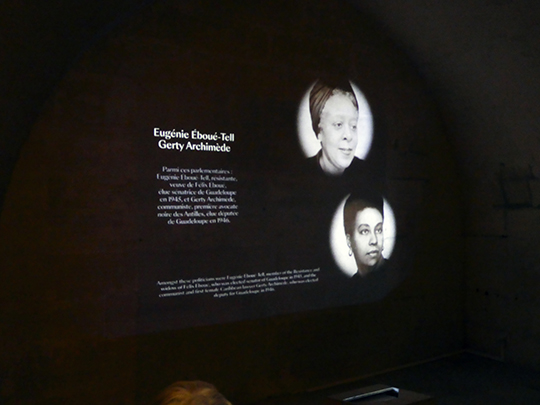
Slide depicting Eugénie Eboué-Tell and Gerty Archimède
© Entrée to Black Paris
A table next to the information panel presents eye-opening details about modern-day slavery, including a CNN video of a surreptitiously filmed auction of migrants in Libya in 2017.
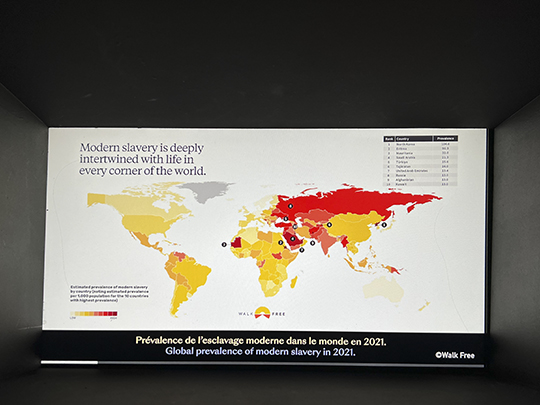 Modern slavery map
Modern slavery map
© Entrée to Black Paris
Leaving the exhibition
The Pantheon has provided a pamphlet that indicates the locations of nineteen crypts of / plaques honoring the people who resisted slavery and racial prejudice, including Josephine Baker (Number 7).
These are easily visited upon leaving the exhibition.
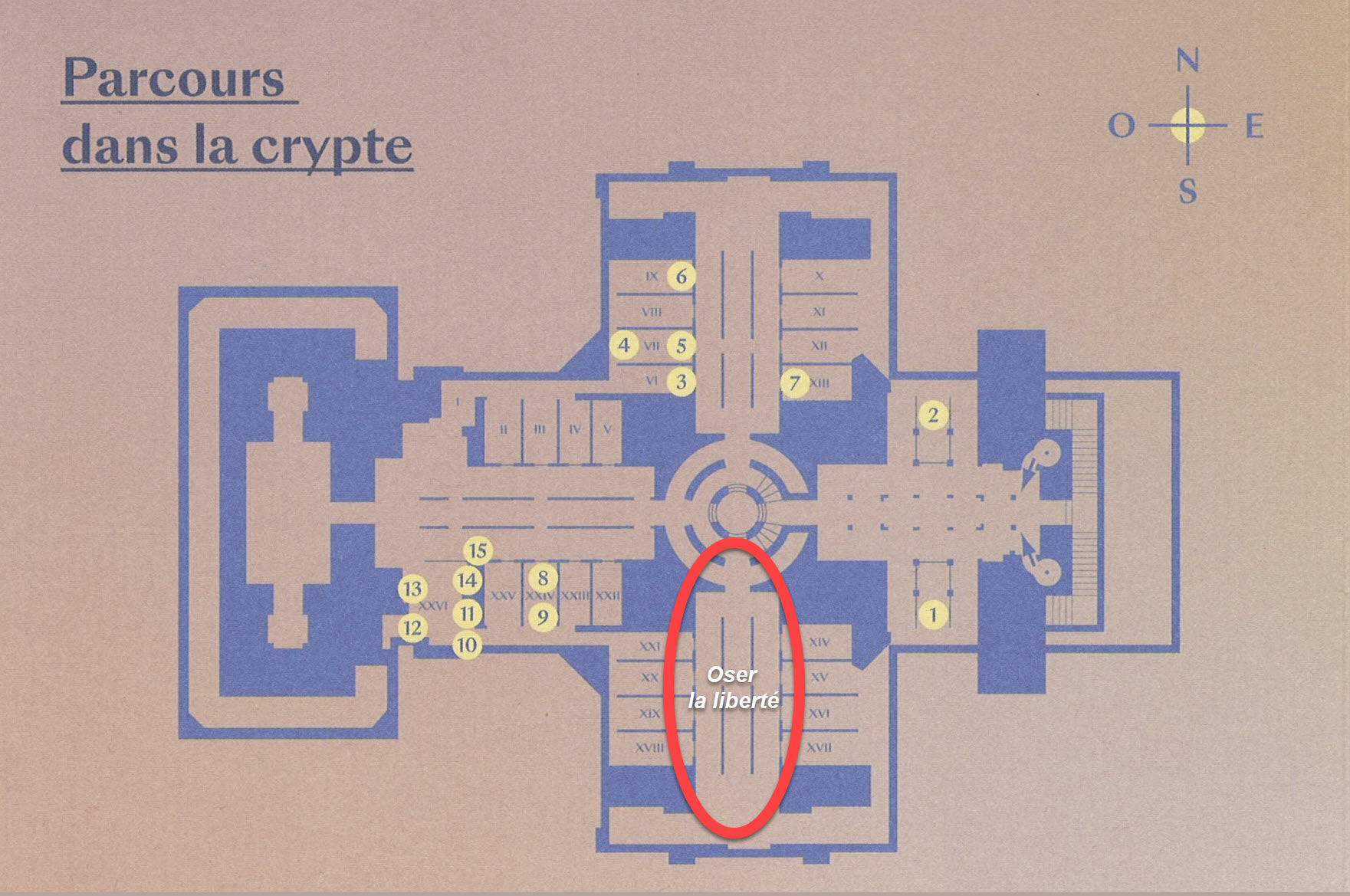 Map of crypt
Map of crypt
© Entrée to Black Paris
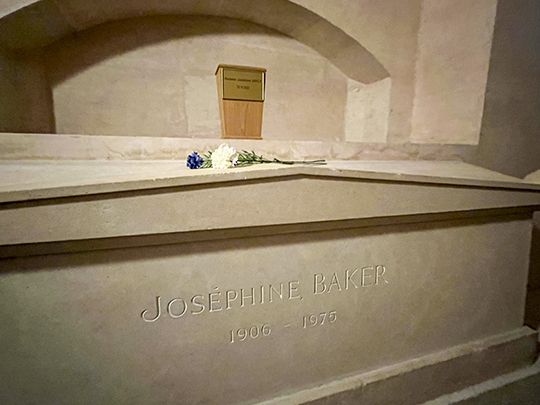 Josephine Baker cenotaph
Josephine Baker cenotaph
© Entrée to Black Paris
When you mount the stairs to return to the main floor of the Pantheon, you will find the gift shop to your left upon leaving the stairwell. You will find a coffee-table-style catalog of the exhibition (French language only) there.
It costs 35 euros.
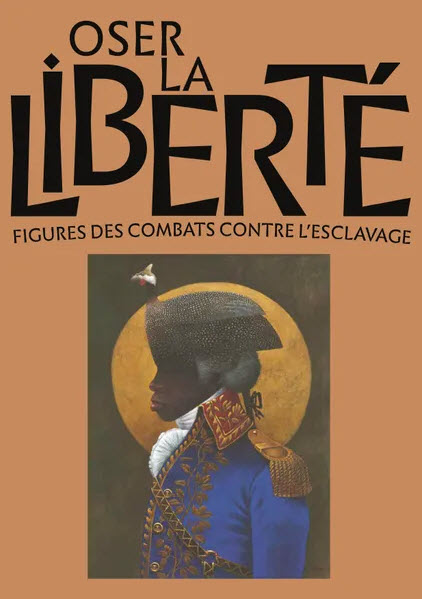 Oser la liberté - book cover
Oser la liberté - book cover
© Entrée to Black Paris
On your way out of the building, be sure to take time to (re)visit the contemporary art installation entitled We Could Be Heroes by Raphaël Barontini. Barontini worked closely with Alexis and the Fondation pour la memoire de l'esclavage to create the pieces displayed in the north and south transepts and the west nave of the monument.
Your visit to Oser la liberté will undoubtedly enhance your appreciation of this installation.
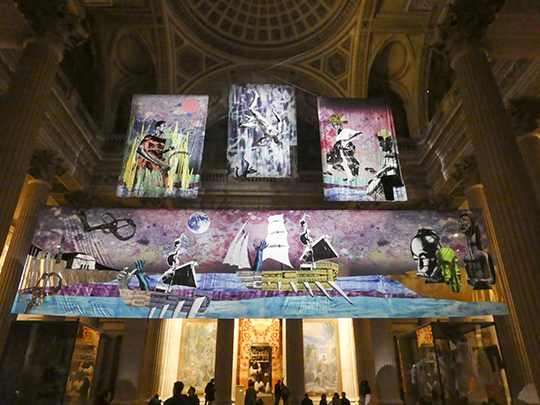 We Could Be Heroes - works in the north transept
We Could Be Heroes - works in the north transept
© Entrée to Black Paris
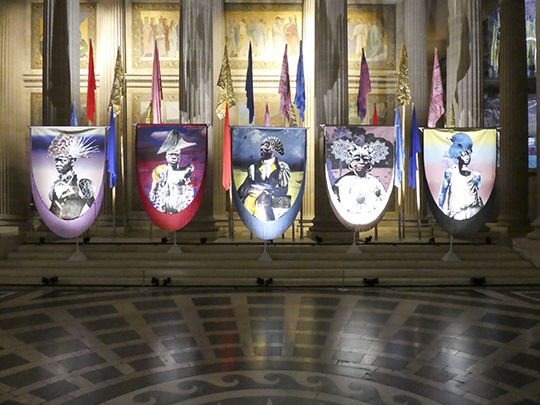 We Could Be Heroes - works flanking the north side of the west nave
We Could Be Heroes - works flanking the north side of the west nave
© Entrée to Black Paris
Watch Florence Alexis' TV5 Monde November 2, 2023 interview about Oser la liberté (in French) by clicking on the image below.
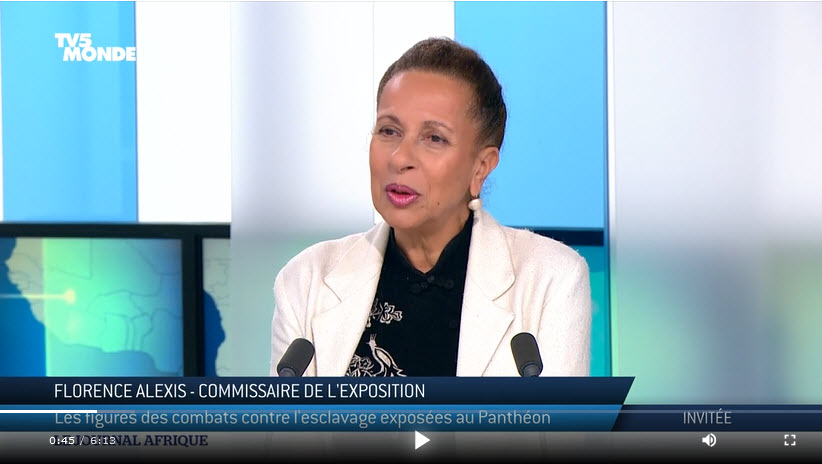 Screenshot from TV5 Monde interview
Screenshot from TV5 Monde interview
Fair use claim
Oser la liberté opened on November 9, 2023 and will be on display through February 11, 2024.
We Could Be Heroes will close on February 11, 2024 as well.

 Our Walk: Black History in and around the Luxembourg Garden - Click here to book!
Our Walk: Black History in and around the Luxembourg Garden - Click here to book!